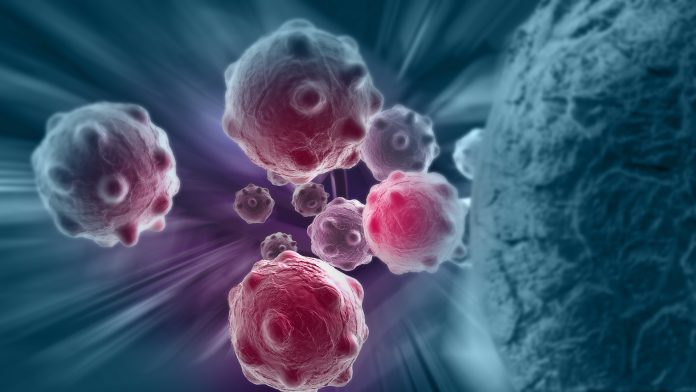
New research from Imperial College London found variable voltages in the membranes of breast cancer cells, revealing clues about how they grow and spread.
A research team from Imperial College London and The Institute of Cancer Research, London, could help us understand how breast cancer cells ‘decide’ when to multiply and where to spread too. The team published their findings in Communications Biology.
Breast cancer is the most common type of cancer in the UK. Around one in eight women are diagnosed with breast cancer in their lifetime; however, there is a good chance of recovery if it’s detected early enough. When breast cancer cells become cancerous, they go through bioelectric changes. For example, the layer surrounding the cells becomes more positively charged than healthy cell membranes.
Co-lead author Dr Amanda Foust, from Imperial’s Department of Bioengineering, said: “When healthy cells become cancerous, the changes they undergo can help them to grow and spread. We know, for example, that certain genes that control cell multiplication can switch off, causing uncontrolled cell growth.
“We don’t yet know why the voltage of membranes fluctuates in cancer cells – but our discovery and technology, enabled by the exciting collaboration of engineers and biologists, opens doors to further work that could help us better understand cancer signalling networks and growth.”
Recording the electric changes in breast cancer cells
The researchers tested the voltages by growing cells from eight breast cancer cell lines and one healthy breast cell line. They recorded the voltages of their cell membranes with a microscope originally engineered to film electrical activity in brain cells, before using machine learning to categorise and characterise the signals.
Surprisingly, the team found fluctuations in the voltage of the cancer cell membranes. More research is needed; however, the suspected ‘blinking’ and ‘waving’ electrical signals might be a form of communication between cells.
They added tetrodotoxin, a potent neurotoxin that blocks sodium channels to prevent the generation of electrical charge in nerve cells. Previous studies illuminated that breast cancer cells rely on these sodium channels to become more invasive.
The researchers found that tetrodotoxin had similar effects on breast cancer cells, suppressing the voltage fluctuations in the cells. The researchers noted that it could potentially indicate new treatment avenues for blocking cancer cell communication and behaviour.
Co-lead author Professor Chris Bakal, Professor of Cancer Morphodynamics at The Institute of Cancer Research, London, said: “This is the first time we’ve observed such rapid fluctuations in electrical activity within breast cancer cells. It looks like breast cancer cells have established a type of electrical language. We still don’t know how complex the language is, but it could allow cancer cells to relay information about nearby nutrients or hostile environments across large distances, and ultimately promote tumour survival.”
The voltage fluctuates across the cells
The researchers induced cancer in the healthy cell line to further test their findings. They found that once these cells had become cancerous, the voltage of their membranes was also fluctuating.
The level of electrical signals varied across cancer types. The more aggressive and untreatable the breast cancer cell lines, the more frequent fluctuations, with signals often appearing as a wave travelling from cell to cell.
Co-author Emeritus Professor Mustafa Djamgoz at Imperial’s Department of Life Sciences said: “Of all the cells in the body, we usually associate ‘excitable’ brain or heart cells with electrical activity. Our research suggests a hidden electrical signalling network among cancer cells that might play a key role in cancer cell behaviour including communication with each other and other cells within the tumour. We know already that the spreading of cancer, the main cause of death from cancer, is facilitated by electrical activity.”
The researchers are now working towards identifying the potential links between breast cancer cell membrane voltage and the behaviour of cancer cells, to understand if they can be cut.






















